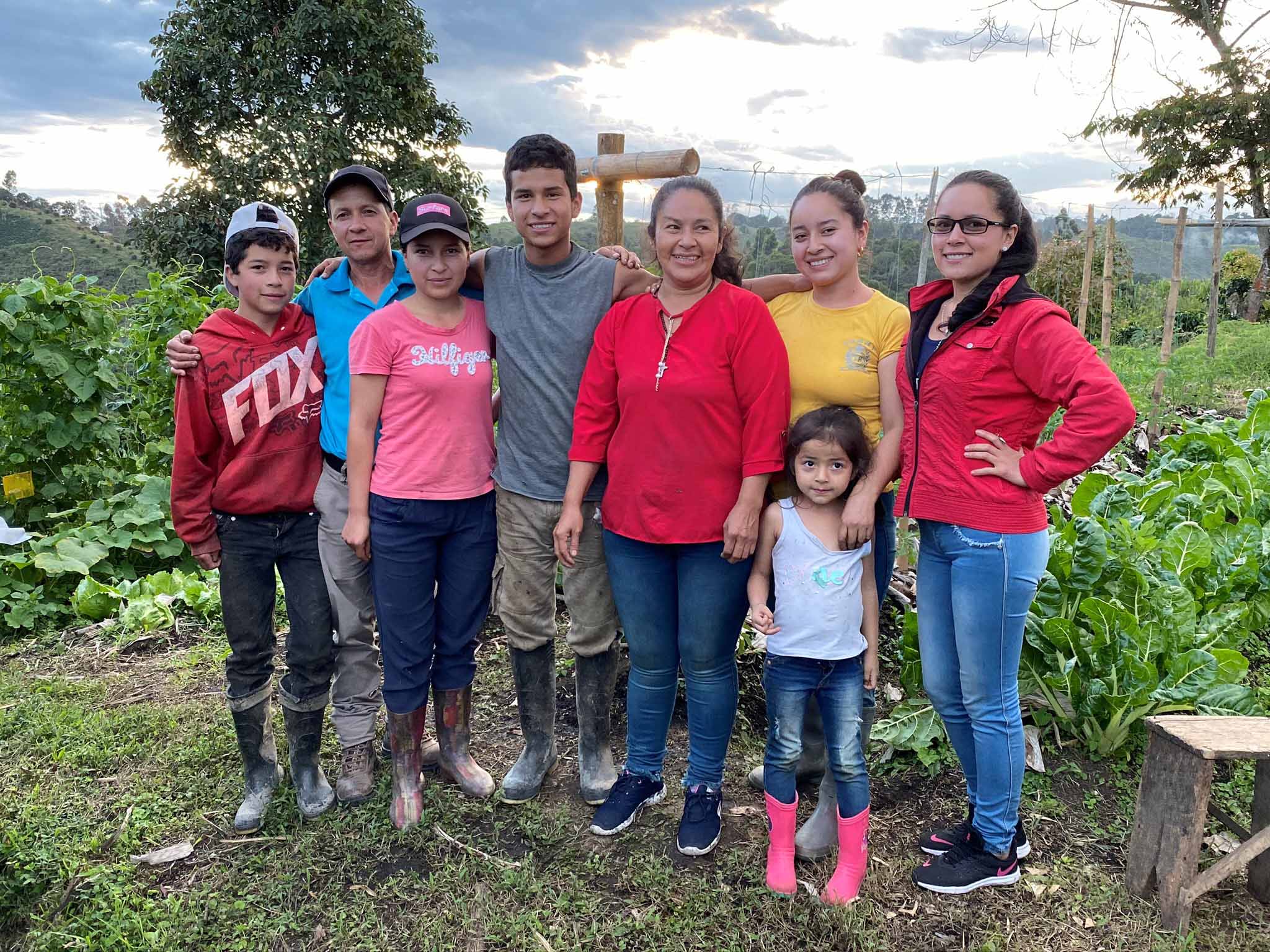The generosity of the people, the stunning landscape, and the skill & hard work of coffee farmers. Canterbury Coffee’s Shelaine Chu reflects on her visit to Columbia.
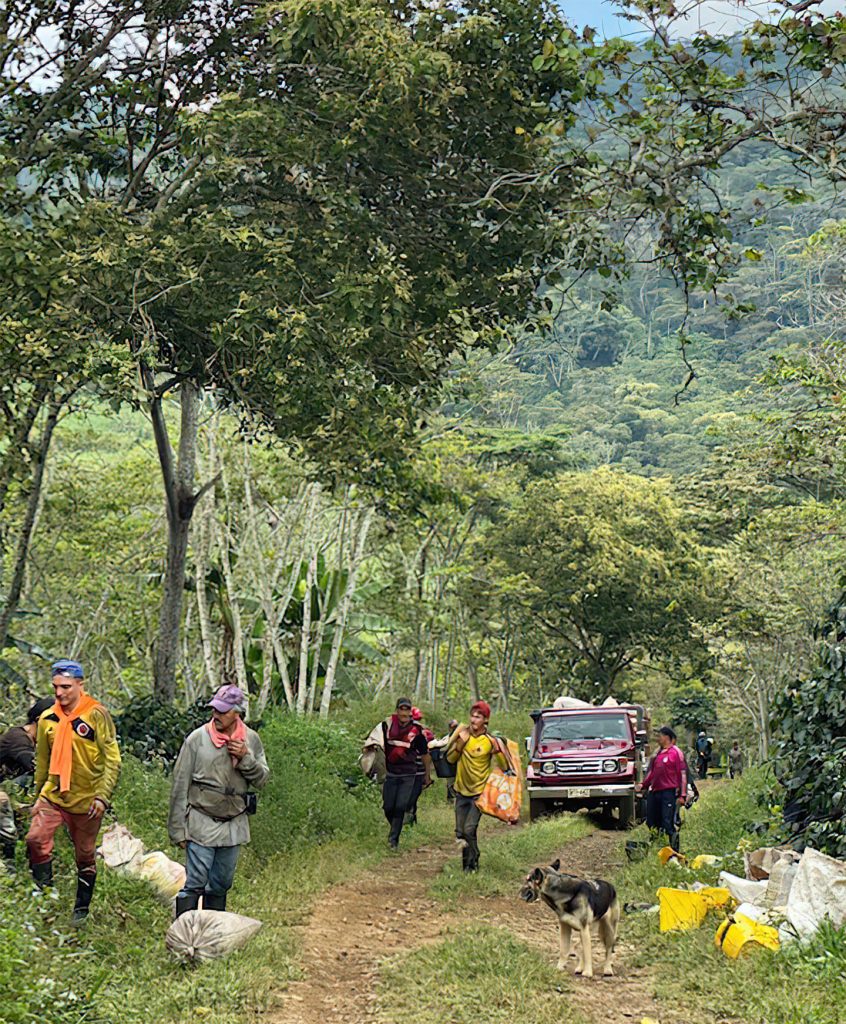
Four of us, David, Brad, Graham, and myself representing our roastery, sales, and marketing teams from Manitoba & BC, were given this incredible opportunity to learn, document, and build relationships with our partners on the ground – consisting of farmers, co-ops managers, importers, and exporters.
As we followed the long windy unpaved roads, we were struck by the physical journey coffee takes in order to get from farm to co-op and then to the milling stations to be bagged and exported to places like Canada and finally to our cafes and homes.
We were fortunate to visit two regions – Huila, where we purchase our organic coffees, and Santander, where our conventional coffees are grown. Colombian coffee is one of a few regions where there are two crops in a season – a main crop and a fly crop.
At the end of 2019, Colombia exported 14.8M 60kg sacks of green coffee. We tried our hand at picking coffees for an hour and got less than ½ pound of coffee – mostly unusable, some overripe and others not ripe enough – according to the trusty refractometer.
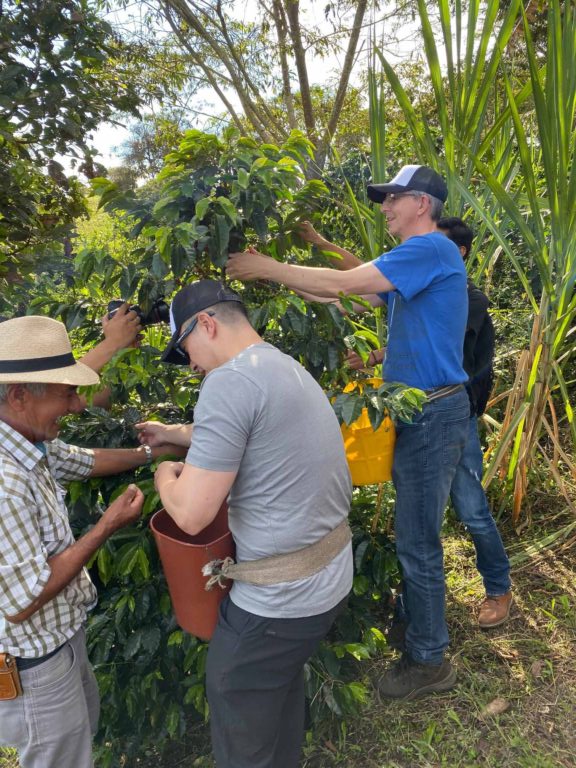
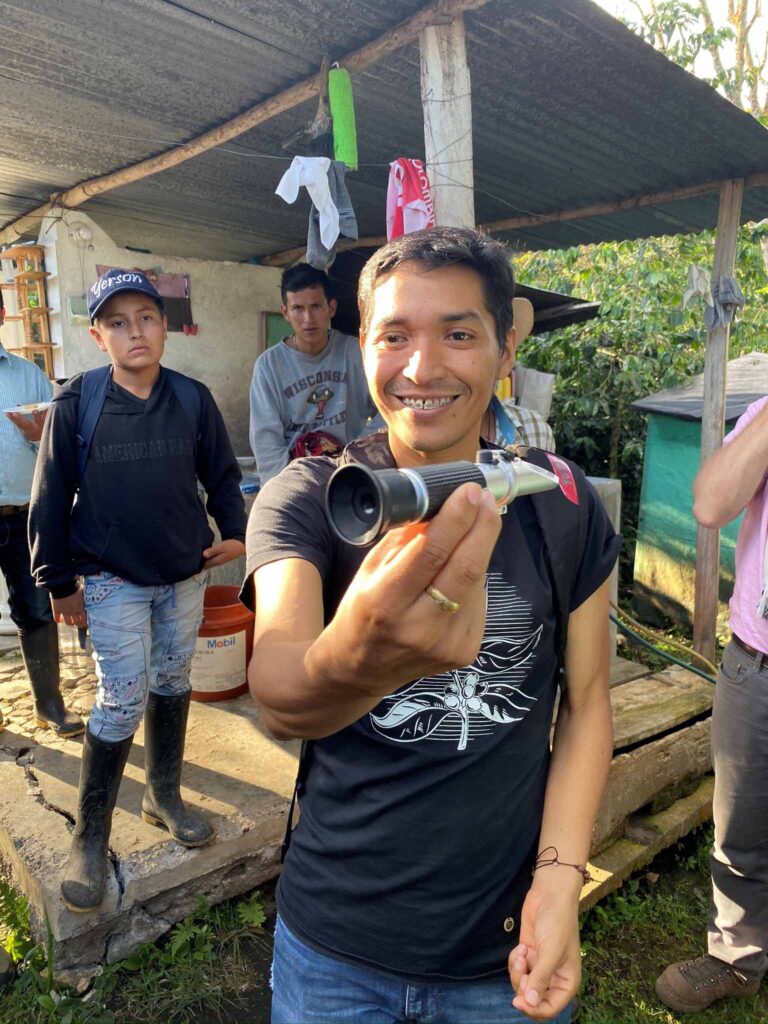
A seasoned coffee picker can pick about 100kg of coffee per day as they push through the densely grown coffee trees.
In Huila, we met a group of 49 farmers who recently formed a co-operative of certified organic and fair trade coffees in order to support one another in training and learning and leverage their coffees. We learned how coffee is grown and processed and what sustainable efforts they were making.
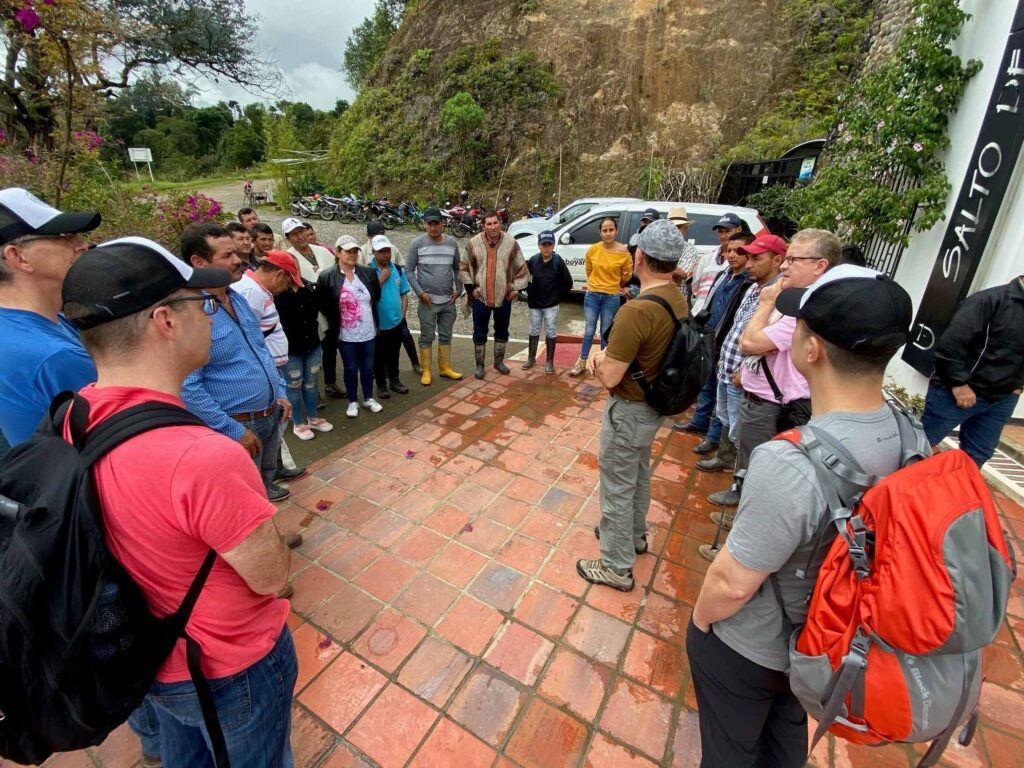
Julio Sanchez’s farm was one family farm we visited. He had 3 hectares, two of which were used to grow coffee. His great grandfather was a coffee farmer – he never used pesticides then so Julio won’t use them now. He laughs as he says, he doesn’t even know how to use pesticides. Having a farm at high altitudes (1888m above sea level) helps avoid some coffee tree pests too.
All the waste his farm creates is composted, filtered, and what can be used, put back to enrich the farms. By joining the co-op, he was able to improve the quality of his coffees by finding out what he was doing incorrectly and learning new techniques.
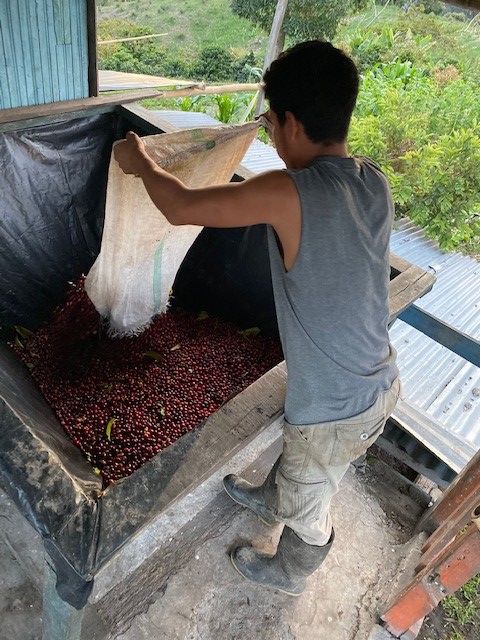
Experienced farmers know what the coffee cherries should taste like – at every stage of the process. Julio explained the fermentation process and in doing so, tasted the coffee pulp and declared it was not yet ready.
Julio has been farming for 25 years and was proud to introduce us to his family. Meeting farming families like this one, and hearing their passion for their produce was one of the major highlights of this trip. Coffee is no longer a commodity or a product we just roast and sell. Each cup is full of stories, faces, and a lot of heart and sacrifice.
